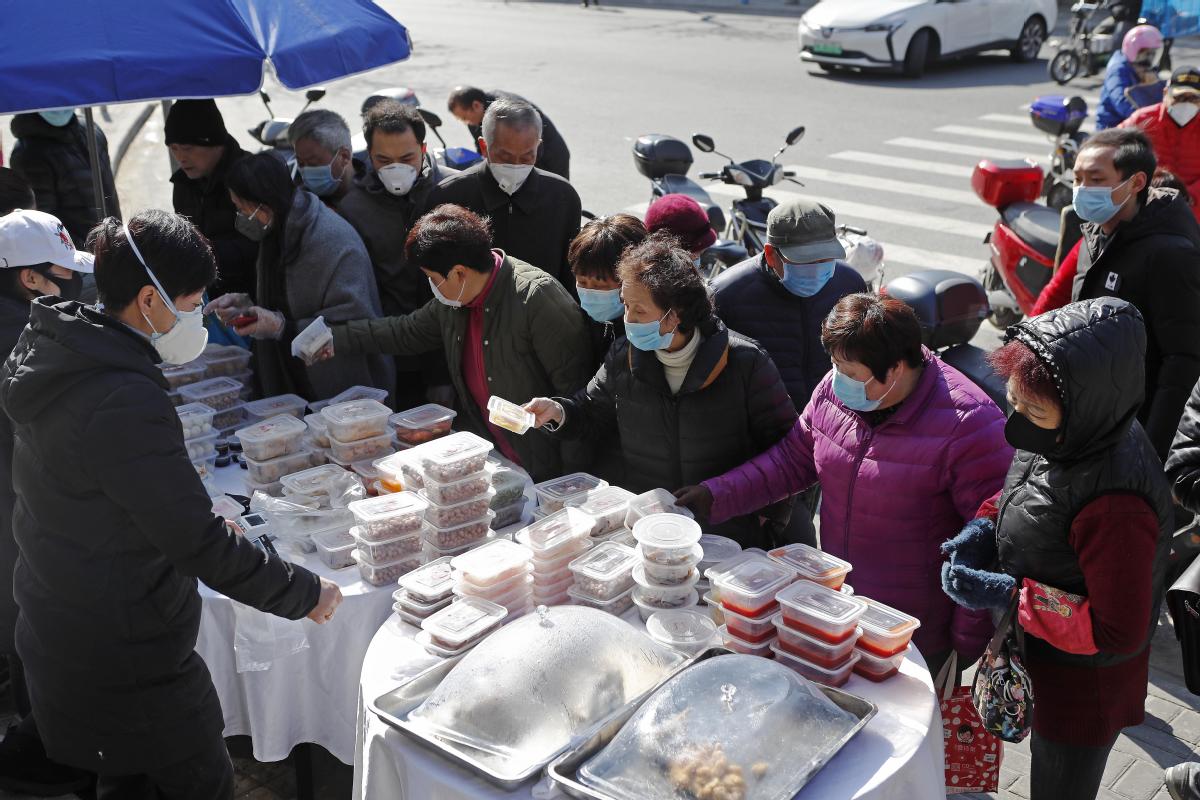Consumers' appetite for ready-to-eat meals grows


Packaged food prepared by restaurants and delivered to homes becomes popular
More Chinese consumers are showing an increasing appetite for prepackaged foods after long periods of self-isolation at home due to the coronavirus epidemic, and ready-to-eat meals prepared by restaurants and delivered to homes are seeing rapid growth.
After such dishes are cooked, they are quickly frozen and vacuum-packed. Then, when dinnertime rolls around, it only requires a simple reheating, which is suitable for consumers who do not want to order takeout food or aren't interested in cooking full meals, but relish original tastes from their favorite restaurants.
Online fresh food platform Missfresh began cooperating with chain restaurants such as Xibei Group and Meizhou Dongpo in March.
Missfresh said for its ready-to-eat meals made by renowned restaurants, daily sales revenue reaches as high as millions of yuan in 20 cities nationwide.
"We have a large number of customers who were born between the 1970s and 1990s. They are not afraid to try something new and would like to eat healthy and high-quality foods at home. But many of them lack time and sufficient cooking skills, and have become the target consumer group for ready-to-eat meals," said Xiao Yungui, director of the self-operated fresh food unit at Missfresh.
The company said that more than two years ago, it tried to cooperate with suppliers with central kitchens to develop ready-to-eat dishes, but it felt the timing of the move was premature as most consumers didn't have sufficient recognition of the service.
"Things are changing fast. The unexpected epidemic this year has quickly boosted sales. It has made us believe in the necessity of providing more ready-to-eat meals for consumers," Xiao said.
Sun Zhigang, director of ready-to-eat meals at Xibei Group, said the taste and texture of dishes like stewed beef will hold up well, comparable in quality to being served fresh at restaurants. Semi-cooked meals have also become a new category in addition to dining in and takeout, and Xibei will continue developing the business.
A survey found more than 60 percent of restaurants in China have plans to focus on retail catering after the pandemic is over. Particularly, large-scale chain restaurants boast mature food supply chains and innovation capability for their dishes. The reputations of their brick-and-mortar restaurants help promote business, according to a report by China Chain Store& Franchise Association.
In addition, more than 74 percent of chain restaurants in the country have established their own central kitchens, and more than half are developing standard cooked or semi-cooked foods. Such foods usually have shorter quality guarantee periods, and thus have high requirements for cold storage and coldchain logistics, the report said.
Walmart, the world's largest retailer, began cooperating with several renowned Chinese restaurants and launched their best-selling ready-to-eat dishes on its online shopping platforms and JD Daojia in March.




































